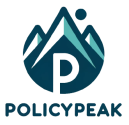Key takeaway
Adverse selection is a phenomenon where policyholders at higher risk are more likely to purchase coverage, leading to imbalances in the risk pool and higher premiums for all. Insurance companies use strategies such as underwriting to evaluate risk factors and ensure premiums cover expected claims costs. Adverse selection is an important consideration in the industry, and effective risk management strategies help ensure fair coverage and pricing for all policyholders.
Adverse selection is a phenomenon that occurs in the life insurance industry when policyholders who are at a higher risk of death or injury are more likely to purchase insurance coverage than those who are at a lower risk. This can lead to imbalances in the insurance risk pool, which can result in higher premiums for all policyholders.
Adverse selection occurs because people who are at a higher risk of death or injury are more likely to see the value of life insurance and are therefore more likely to purchase it. Conversely, people who are at a lower risk may be less likely to see the value of insurance and may choose not to purchase it.
Insurance companies use a variety of strategies to mitigate the effects of adverse selection, such as risk-based pricing, underwriting guidelines, and marketing efforts that target specific demographic groups. These strategies help to ensure that insurance risk pools are balanced and that premiums are set at an appropriate level to cover the expected cost of claims.
One of the most effective ways to mitigate adverse selection is through underwriting, which is the process of evaluating the risk of an applicant before issuing a policy. Underwriters use a variety of factors to assess an applicant’s risk, such as their age, health status, occupation, and lifestyle habits. By carefully evaluating each applicant’s risk profile, underwriters can ensure that premiums are set at an appropriate level and that the risk pool remains balanced.
Overall, adverse selection is an important consideration in the life insurance industry, as it can have a significant impact on the financial health of insurance companies and the premiums that policyholders pay. By using effective underwriting and risk management strategies, insurance companies can mitigate the effects of adverse selection and ensure that all policyholders receive the coverage they need at a fair price.
